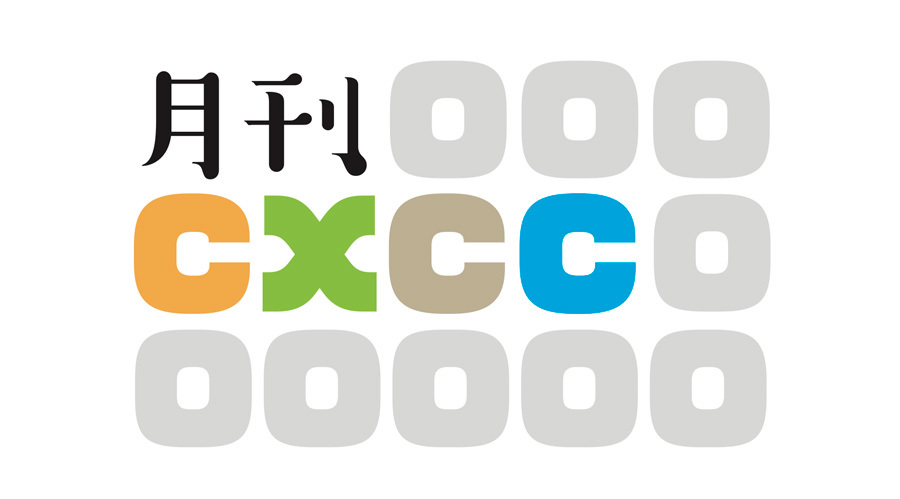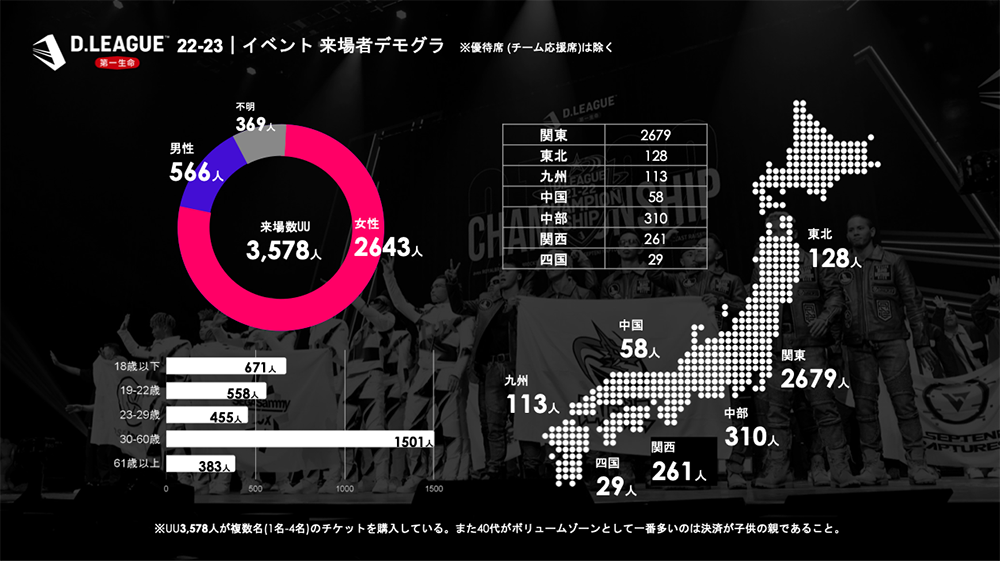How can Dentsu Inc.'s creative approach contribute to the ever-evolving field of CX (Customer Experience)? "Monthly CX" is a series where members of Dentsu Inc.'s CX specialist division, the "CXCC" (Customer Experience Creative Center), share insights ( For more on Monthly CX, click here ).
This time, we introduce the case study of Japan's first-ever professional dance league, the "D.LEAGUE (D League)".
While dance is gaining global attention today, in Japan, dance became a compulsory subject in junior high schools over a decade ago, following the 2012 revision of the junior high school curriculum guidelines. Coupled with the rise of social media, dance is becoming increasingly accessible, especially among younger generations.
We spoke with Juhwan Lee, who has been involved with the D.LEAGUE since its inception and oversees sales and corporate promotions, about the CX design that draws in and excites the league's audience.

[Profile of Juhwan Lee]
Dentsu Inc.
Customer Experience Creative Center
After joining Dentsu Inc., he handled three Fuji TV affiliate stations (CX, KTV, THK) within the Media Division. As a business producer, he worked on cosmetic brand launches, brand strategy, sales promotions, and creative projects. At the Content Business & Design Center, he managed the planning, sales package development, proposal, production, and implementation for the IP expansion project "Dragon Quest 30th Anniversary Project." He is currently part of the Customer Experience Creative Center.
Creating a "goal-worthy place" for dancers
Monthly CX: First, could you briefly explain the "D.LEAGUE"?
Li: D.LEAGUE is Japan's professional dance league, launched in 2020. All 13 teams (as of the 23-24 season) compete in a roughly six-month regular season consisting of 14 rounds. The top six teams with the most points advance to the Championship, where the team that wins the tournament becomes the season champion.

KADOKAWA DREAMS /ONE【D.LEAGUE 23-24 CHAMPIONSHIP】
*Click the image to watch the video
Li: Matches can be watched live at the venue, and they are also streamed for free via the "D.LEAGUE Official App" and various video streaming platforms. In 2021, the inaugural year, it was only streamed due to the pandemic, so there were concerns like, "We can't bring in spectators; will it just end like this?" However, attendance has grown with each season, and the cumulative number of visitors has now surpassed 100,000.
Monthly CX: What kind of audience makes up the majority?
Li: Currently, we only hold events in Tokyo, so the audience is primarily people living in the Kanto region. A key characteristic is the overwhelmingly high percentage of female attendees, with those in their teens and early twenties being particularly numerous. Many families come together, and among the 30s to 60s age group, there are also parents of the younger generation. The user demographics for the app's live streams also show that 70% are women, with many in their teens and twenties.
Monthly CX: I'm surprised to hear such strong support from the younger generation.
Li: For today's kids and Gen Z, dance has become a natural part of their lives. Dance became a required subject in junior high schools in 2012, and data shows dance content has generated the highest numbers on recent social media platforms like TikTok. Looking at this data, I'm confident dance will continue to grow as the third major market, following representative sports like baseball and soccer. Also, since many young people in their 20s are involved in running the competitions, I think we're effectively capturing the sensibilities of the youth.
Monthly CX: I imagine dance leagues are relatively rare globally. What was the original purpose behind creating this one?
Lee: It was born out of a desire to further invigorate the dance industry and increase opportunities for dancers.
Actually, before the D.LEAGUE was established, there was no clear definition of what constituted a professional dancer in Japan. Take baseball, for example: players win tournaments to reach Koshien, get scouted, pass a pro test, and only then are they called professional baseball players after joining the Nippon Professional Baseball Organization. But the dance industry lacked such an established process.
Monthly CX: To put it bluntly, was it a situation where anyone could call themselves a pro?
Lee: Yes. That's not necessarily a bad thing, but some in the dance community felt, "We want to create a place that serves as a goal for dancers and those aspiring to be dancers." Having such a place increases the number of people participating in the sport and makes dance more accessible.
We operate under the philosophy that "dance changes the world," and our greatest wish is for the D.LEAGUE to become that platform.
Creating multifaceted touchpoints to deepen people's love for dance
Monthly CX: What key points did you focus on when designing the D.LEAGUE experience?
Li: I believe a major feature of D.LEAGUE is its design allowing fans to influence the outcome of competitions. The system uses a points system to determine match results, incorporating not only judges' scores but also audience votes from spectators and viewers.
Monthly CX: For supporters, does this mean they can feel the joy or disappointment of their team's win or loss more personally?
Li: Exactly. The outcome is decided by six votes, including the audience vote. If all six votes go to the same team, they receive a SWEEP (bonus points). This means the audience vote is crucial for the team. Even if all five judges vote for the same team, they won't get extra points without the audience vote. There have been many instances in the past where the audience vote decided the outcome of a match.
Monthly CX: Dance is also something where performers and audience come together to create enjoyment, right? I thought the audience vote system really maximizes that characteristic.
Li: That's right. Even if a performance is outstanding, it's difficult to aim higher without gaining fan votes. That's why D.LEAGUE players actively appeal to fans. Those who become fans through this process then support the players even outside the D.LEAGUE.
I think the audience vote plays a role in fostering that fan community. D.LEAGUE players genuinely want to value their fans, so I believe the bond between players and fans is stronger here compared to other sports.
Monthly CX: Are there any other distinctive features?
Li: As an initiative to bring D.LEAGUE players and fans closer together, we have a send-off program.
Li: When spectators are leaving, the D-League players who performed greet them at the exit. This allows fans to interact closely with the players they just watched compete, and the dancers can directly express their gratitude to the fans who came to see them.
Monthly CX: That sounds like a great motivator for both the dancers and the fans.
Li: It's a rare opportunity to express gratitude directly outside of social media, so I believe it's becoming a valuable space. Additionally, to encourage interaction among fans, we're also running a project where we produce and distribute trading cards featuring the D-League players.
Monthly CX: Trading cards?!
Li: We give one pack (containing three cards) to every ticket holder at the venue. We include rare cards and cards signed by the dancers, consciously designing a system to get fans excited.
The cards also serve as a way for fans to learn more about the dancers. We're aiming to create touchpoints that might even make fans fall for dancers they didn't know before.
Monthly CX: I think this is a system fans will absolutely love, and as you mentioned earlier, it seems like it will really boost interaction among fans.
Li: Regarding the trading cards, another key point is that we have designated areas at D.LEAGUE venues where fans can trade cards with each other.
Li: We hope that exchanging cards featuring their favorite dancers will help energize interactions among fans.
Making dance accessible to everyone
Monthly CX: I thought it was an excellent CX design, packed with mechanisms to make fans fall in love with dance. Having been involved since the D.LEAGUE's inception, what are your reflections?
Li: I strongly feel the potential of dance. I have no dance experience myself, and for a while after D.LEAGUE's inception, I harbored doubts: "Can dance alone truly move and excite people?" However, I believe this uncertainty was largely influenced by the pandemic, which forced us to operate without spectators, preventing us from seeing fan reactions up close.
When we were able to hold events with spectators again and I saw fans of all ages getting excited, it brought tears to my eyes.
Monthly CX: I imagine that feeling stems from the passion everyone—the dancers and the operational staff—brings to their work.
Li: That's right. Not only the staff involved in operations, but also the D-Leaguers competing in the D.LEAGUE – they're all truly wonderful people who approach dance with pure passion.
We also receive words of gratitude from dancers and fans, which motivates us daily. I still feel we haven't achieved satisfactory results in terms of recognition and awareness, so we need to work even harder from here on out.
Monthly CX: We're looking forward to what's next. Finally, could you share your vision and future plans for D.LEAGUE?
Li: Our operational vision is to "create a NEW STANDARD for how dance is viewed and presented." We want to make dance more accessible to everyone, not just make the competitions exciting. To achieve this, we believe it's crucial to keep sowing seeds for the future.
Starting in July 2024, we'll launch the "SD.LEAGUE" project, which will determine the top studio among over 800 dance studios nationwide. Through this initiative, we aim to discover future dance talent, provide them a spotlight, and also focus on their development.
Additionally, we are considering expanding the D.LEAGUE to include a second division and holding events in regional areas. Our goal is to grow this into a league that encompasses all of Japan and eventually expand globally.
Personally, I aim to be involved in more content that can expand from Japan to the world. I also aspire to remain a producer who can run alongside partners and content holders throughout every stage of the process.
(Editor's Note)
In the ever-evolving dance industry, the D.LEAGUE project represents a profoundly meaningful challenge. It holds significance both in promoting dance as a competitive sport and in exploring new forms of show business. The project incorporates various experiential designs to connect fans and athletes, and it seems likely that new experiences will continue to be invented going forward.
If you have requests for future topics or case studies like this, please send a message to the Monthly CX Editorial Department via the contact page below. Thank you for your continued readership.

Monthly CX Editorial Department
Dentsu Inc. CXCC: Kibata, Koike, Ohtani, Okumura, Kosugi, Yi, Saito, Oda, Takakusagi, Kanasaka















